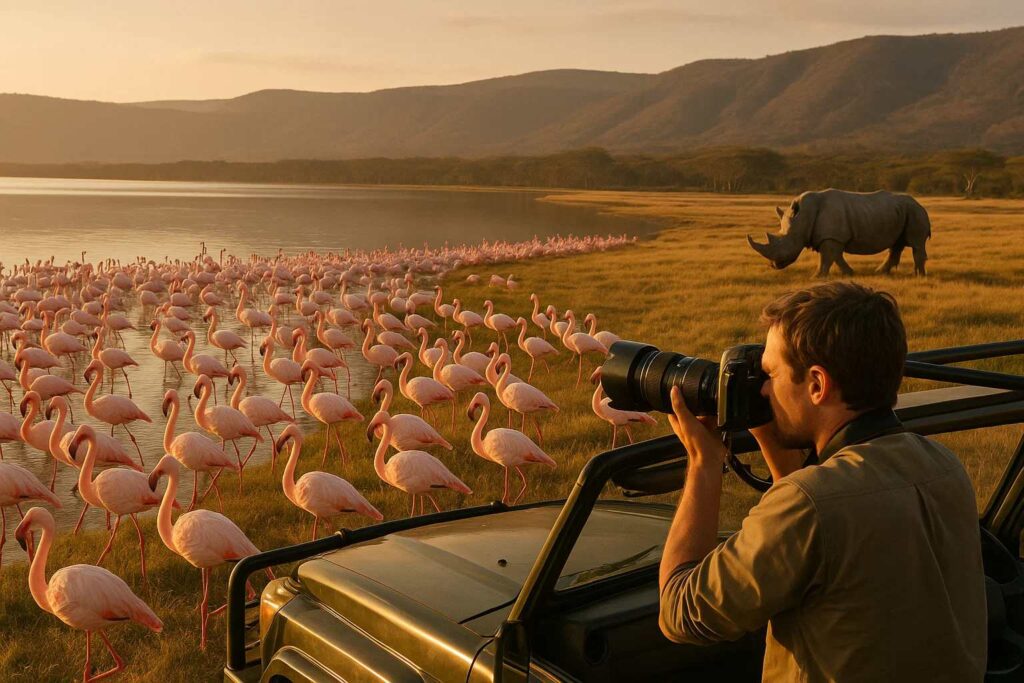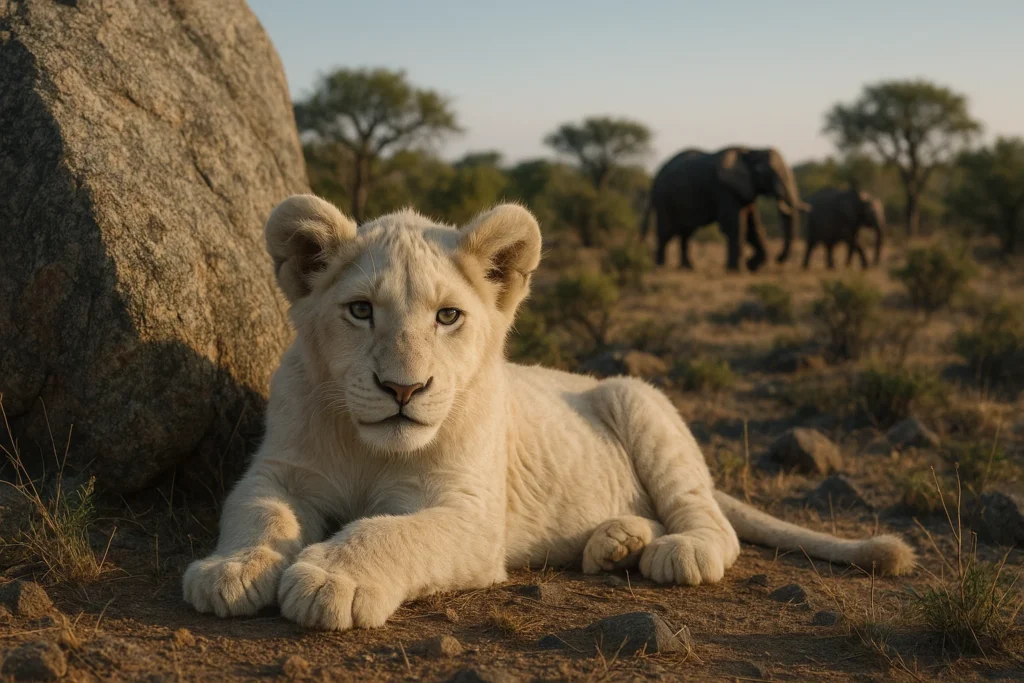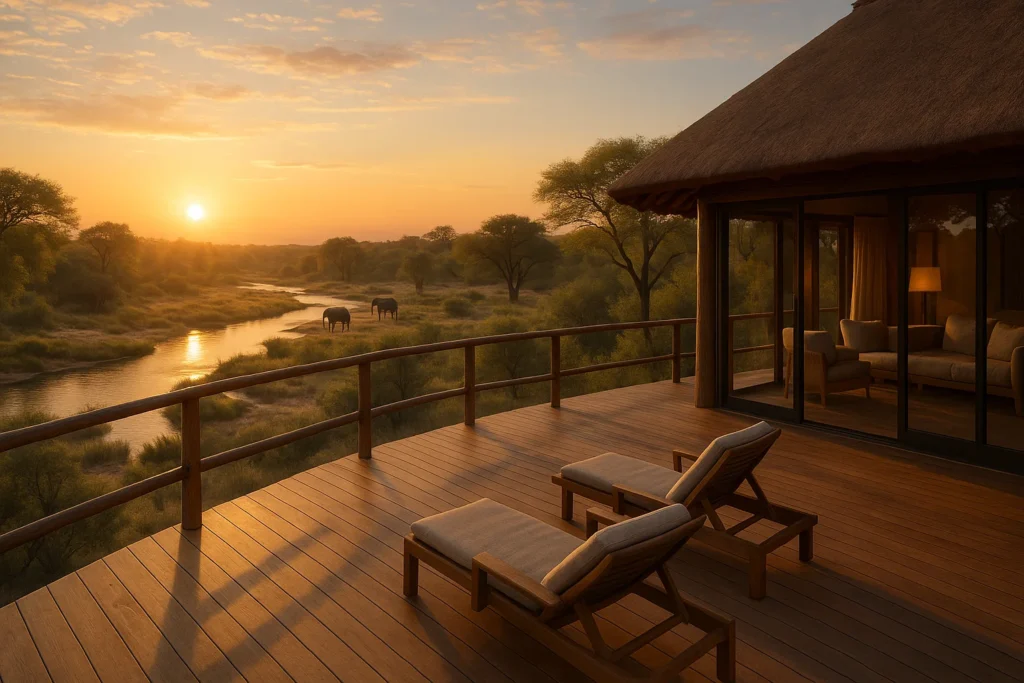Nestled in Kenya’s Great Rift Valley, Lake Nakuru National Park is a dream destination for wildlife and landscape photographers. From vibrant flamingo flocks that paint the shoreline pink to elusive rhinos grazing near the acacia woods, every corner offers a frame-worthy moment. Whether you’re visiting with a DSLR or just your smartphone, this guide will help you capture the magic of Lake Nakuru with skill and purpose.
The best time for photography at Lake Nakuru
Timing is everything in wildlife photography, and Lake Nakuru is no exception. The dry season, from June to February, offers the clearest skies and best light conditions. For flamingos specifically, July through October tends to be the best window due to the algae bloom that attracts them to the lake in large numbers.
Golden hour—just after sunrise and before sunset—is your best friend. Mornings are ideal for misty landscape shots and wildlife activity, while late afternoons cast a warm hue over the lake and its inhabitants. Avoid midday shooting when the light is harsh and wildlife is less active.
Gear tips: what to pack
You don’t need to carry an entire studio to photograph Lake Nakuru well, but some thoughtful gear choices will elevate your shots:
- Camera body: A DSLR or mirrorless camera with fast autofocus and good ISO performance is ideal.
- Lenses: A telephoto lens (200-600mm) is essential for flamingos and rhinos at a distance. Bring a wide-angle lens (16-35mm) for sweeping landscape shots.
- Tripod/monopod: Useful for stability, especially during golden hour.
- Lens hood and UV filters: To manage glare and protect your equipment from dust.
- Spare batteries and memory cards: Power and storage are your lifelines in the field.
Smartphone users should focus on framing and lighting, and consider clip-on zoom lenses or stabilizers.
How to photograph flamingos at Lake Nakuru
Flamingos are arguably Lake Nakuru’s biggest visual attraction. Here’s how to do them justice:
- Use a long lens to compress perspective and capture large flocks in motion.
- Play with reflections early in the morning when the lake is still.
- Shoot at eye level by getting low (from the vehicle or shore) for more intimate angles.
- Try slow shutter speeds to create dreamy motion blur when they fly or move as a group.
Patience pays off: wait for interesting behaviors like synchronized feeding, group takeoffs, or unique interactions.
Capturing rhinos: from portraits to drama
Lake Nakuru is one of the best places in Kenya to photograph both black and white rhinos. These shy giants require a thoughtful approach:
- Keep your distance: Use a telephoto lens to avoid disturbing them.
- Focus on the eyes: A sharp gaze adds emotional weight to your image.
- Frame with environment: Include bushes, mud, or acacias for storytelling.
- Black and white editing can add drama and timelessness to rhino portraits.
Morning and late afternoon are best for rhinos as they’re more active and the light adds texture to their rough hides.
Scenic landscapes and reflections
Lake Nakuru isn’t just about wildlife; it’s a landscape photographer’s haven. The alkaline lake, surrounded by escarpments and wooded hills, offers countless wide-angle opportunities.
- Try panoramic shots from Baboon Cliff or Lion Hill viewpoints.
- Use leading lines from the shoreline or tree silhouettes to draw the eye.
- Look for reflections when the water is calm, especially after rainfall.
- Include a subject (like a lone buffalo or acacia tree) to give scale to vast landscapes.
Don’t overlook the changing weather—misty mornings and stormy skies can add mood and atmosphere.
Photo etiquette and park rules
Respecting wildlife and park regulations is essential for ethical photography:
- Stay inside your vehicle unless in designated areas.
- Avoid sudden movements or loud noises that can stress animals.
- Do not use drones; they are banned in Kenyan national parks without special permits.
- Leave no trace: Don’t litter or disturb natural elements for the sake of a shot.
Your best photos come when you’re patient, observant, and respectful of the environment.
Local tips from the field
- Hire a guide with photography experience. They know how to position the vehicle and predict animal behavior.
- Start early. Entry gates open at 6 AM; be among the first in for golden light and less crowded scenes.
- Book a lodge with a view. Some accommodations offer stunning lake overlooks for sunrise shots right from your balcony.
- Check seasonal water levels. They affect where flamingos gather, so ask rangers for current hotspots.
Conclusion
Photographing Lake Nakuru is about more than just pressing a shutter—it’s about immersing yourself in one of Africa’s most visually captivating ecosystems. Whether you’re drawn by the delicate pink hues of flamingos or the powerful stance of a grazing rhino, the park invites you to slow down, observe, and tell visual stories that last a lifetime.
Looking for more photo safari inspiration? Explore other guides on Photography & Gear to level up your next wildlife adventure.
Frequently Asked Questions (FAQs)
Yes, but the largest flocks are usually present from July to October when food conditions are ideal.
Absolutely. Many local operators offer tours tailored for photographers, including early entry and knowledgeable guides.
Use a fast shutter speed (1/2000s or higher) with continuous autofocus and burst mode to freeze action.
Yes, as long as you keep it secure and pack it in padded bags. Most lodges are familiar with photographers’ needs.
Most lodges and campsites have charging facilities, but a power bank or car inverter is a good backup.
No extra fees for personal gear, but professional setups may require permits. Check with KWS for details.
No, drones are restricted without prior approval from Kenya Civil Aviation Authority and KWS.
Use zippered camera covers, lens cloths, and silica gel packs inside your bag.
Photography from the vehicle is often ideal and required for safety. Use beanbags or window mounts for stability.
Yes, it’s easily combined with Maasai Mara or Lake Naivasha for a varied portfolio.






